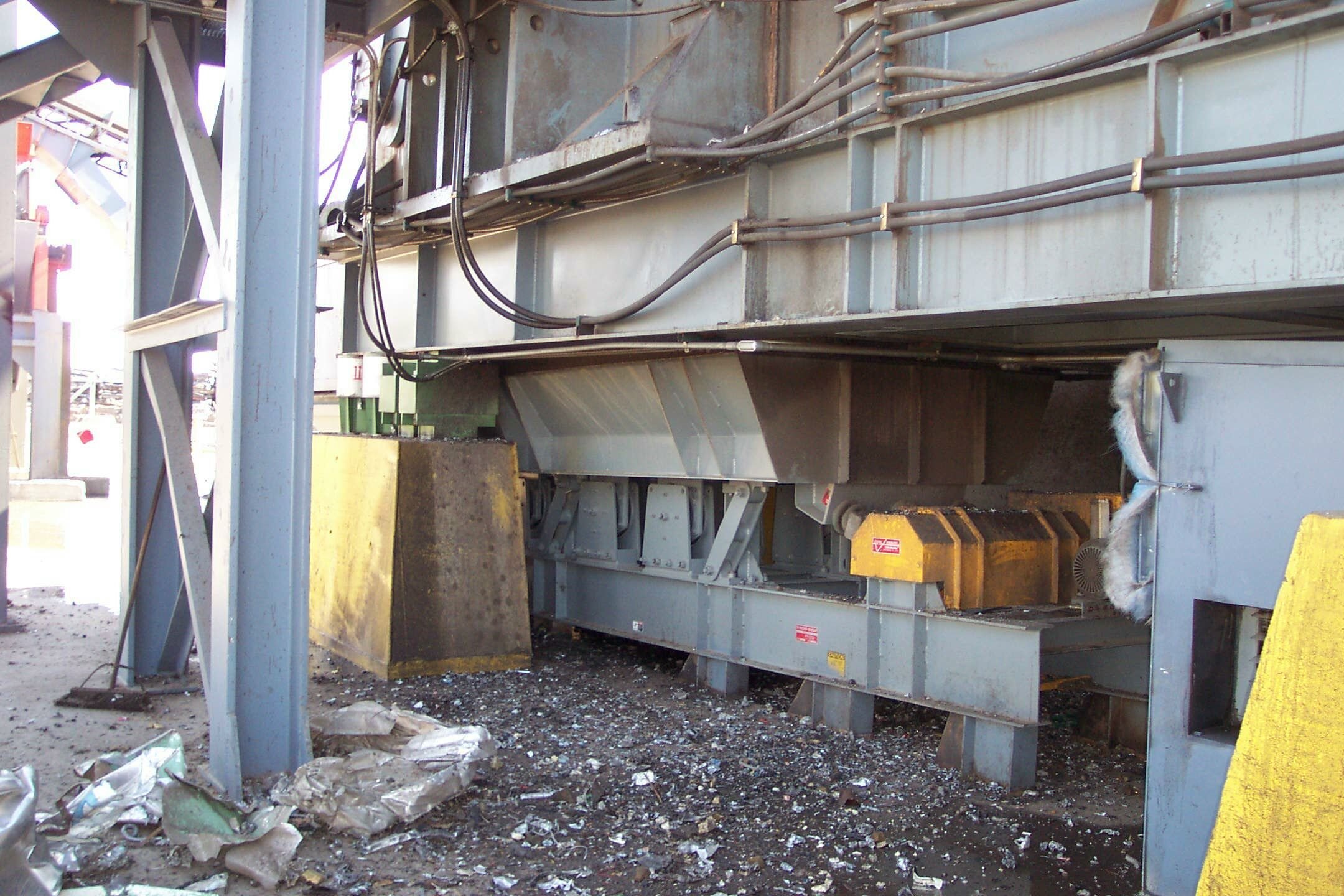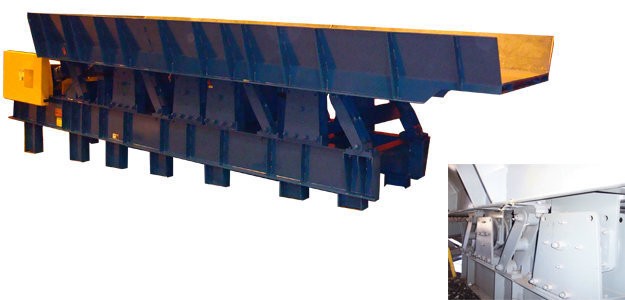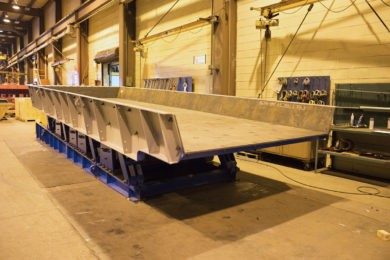In the increasingly vital struggle to capture recyclable materials, automobiles and major appliances represent a treasure trove of metals. But these larger, heavy duty items have proven a difficult part of the recycling process. It takes a lot of force to break down these goods for recycling and the machines that do that work are impressive feats of recycling technology.
The metal-eating monsters that begin the process are eight feet wide shredders with a giant rotor propelling two-dozen, 2,400-pound hammers at 450 revolutions per minute. These hammers slam into the scrap metal at a minimum of 175 miles per hour, chopping the metal into jagged fist-size chunks and sending them through what resembles an oversized cheese grater, onto a conveyor that carries them past a magnet where the steel is separated from the other metals.
However, all this destructive power has proven too much for existing conveyor belts and other ancillary equipment. This problem has driven the team to find a new solution at General Kinematics.
GK High Tonnage Under Mill Oscillator
The solution — GK high tonnage Under Mill Oscillators (UMO). As the first piece of equipment following the shredder, this integral machine must be reliable and rugged enough to handle frequent explosive forces with high impacts, constant shock load, and process flow demands from the shredder.
An oscillator (or vibrator), which is designed to fit under a shredder, catches and meters the shards of metal onto downstream conveyors, with a constant, homogeneous flow. Oscillators are “positive displacement” devices, which use a camshaft drive, transmitting a generally high-amplitude, low-frequency motion through rocker arms and reactive coil springs.
The GK high tonnage UMOs are designed with extra structural and gridwork reinforcement to ensure they will withstand the severe conditions found underneath auto-shredders. Also, GK’s UMOs provide consistent conveying throughout various surge loads.
The units are specifically engineered for this application, combining GK’s SYNCRO-SHEAR® with the SYNCRO-CUSHION™ Drive assembly to provide lateral stability and down stops to handle the force of even the largest explosions without damage to the conveyor.
Vibratory feeders are also used at the magnetic separator area and in the non-ferrous process area to aid in the separation of materials.
Resource Recovery
As natural resources become scarcer and the environment becomes more fragile, recycled scrap metals are increasingly in demand. Industry analysts are now forecasting that the global scrap metal recycling market will grow to a whopping 997.9 million metric tons by 2021. To keep up with this demand, more and more scrap metal shredders will be put into operation.
Scrap iron and aluminum metals are being used extensively in the construction industry in projects such as roads and bridges. In the transportation industry, recycled metals can be used in the manufacturing of automobiles, aircraft and other modes of transportation. Many appliances are also made out of scrap metal, especially aluminum.
Recycled steel scraps can be made into higher quality tools through a process using an electric arc furnace. Stainless steel can also be made in this way.
Aluminum scrap metal can also be melted at a much lower temperature than virgin aluminum, so the process consumes much less energy. Aluminum cans produced from recycled material use as little as 4 percent of the energy required to make the same cans from bauxite ore. This is generally true of all recycled metals. That means manufacturers not only save on energy but also can reduce CO2 emissions by as much as 86 percent. The reduction in water usage is 40 percent, and reduction in water pollution is 76 percent. Recycling scrap metal also reduces the size of our landfills.
In general, recycling scrap metal protects our environment, as well as provides economic savings in the manufacturing process, savings that can be passed on to the consumer.
Keeping up with Demand
Built with a reinforced trough to handle increases in your production and keep up with demand, the UMO is ready to match your various surge loads. Scrap processors with existing equipment have found the GK Under Mill Oscillator to be extremely flexible and beneficial when added to a growing facility. The UMO easily fits into tight spaces offering dependable load handling and a low maintenance solution.
General Kinematics maintains an ongoing dialog with our customers, constantly assessing their future needs. As technology changes, GK’s engineers and designers are able to anticipate how those changes affect GK’s solutions for the industry. And because GK monitors the performance of their equipment in real-world use, they can see what improvements need to be made for the next generation of equipment.
If you have a question about any of General Kinematics equipment, contact one of our six international offices in the U.S., Germany, England, Beijing, Shanghai, or India.








